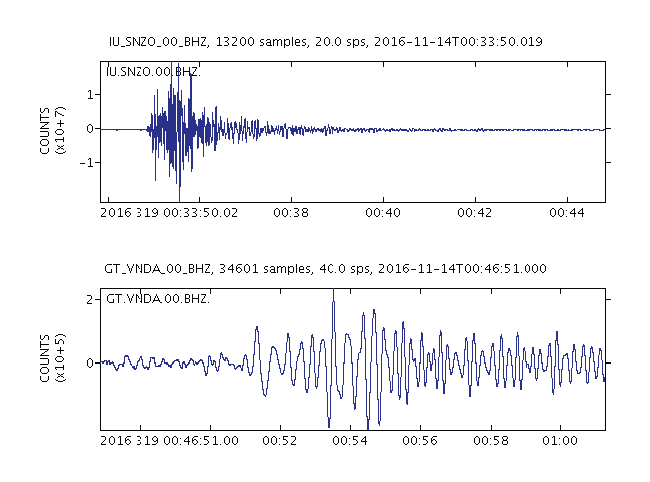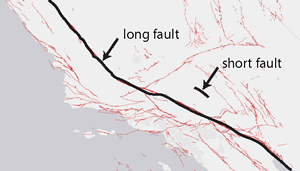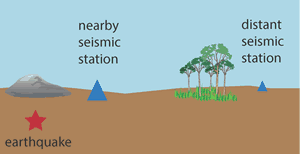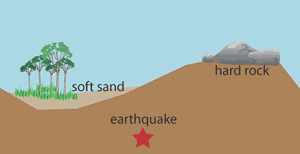
Created by Andy Michael, USGS, and Daniel Ross, 12 year old USGS Volunteer for Science.
When we listen to music we hear a wide range of sound frequencies or notes. When we feel an earthquake we feel a wide range of frequencies but unlike music the notes are less distinct. People describing what they felt during an earthquake may call it a "sharp jolt" or a "rolling motion." The sharp jolt is due to high frequencies while the rolling motion is due to low frequencies. What you feel during an earthquake is a product of the earthquake itself, how far you are from the earthquake, and the types of rocks between you and the earthquake. To learn about this we will convert the shaking during earthquakes to sound and then listen to the sounds.
Converting Shaking to Sound
When a loudspeaker produces sound it shakes. During an earthquake the ground shakes. To convert the earthquake shaking to sound we make the loudspeaker shake the same way the ground did. But, if we really did that the sound would be too low for people to hear. So, we speed things up so that the loudspeaker moves back and forth much faster than the ground did and then we can hear it.
Tips for listening
The sounds on these pages require a good loudspeaker. If your computer doesn't have good speakers (a subwoofer is best) then try using a pair of earphones.
Interactive Learning Quiz
Fault Length Effects

Earthquakes come in many different sizes which you generally hear described by their magnitude. There are other ways to measure the size of an earthquake, for instance we can measure how long the fault was that slipped during the earthquake.
Distance Effects

As sound travels through the air or earthquake shaking travels through the ground, the waves lose energy. And so a band sounds louder close to the stage than further back and an earthquake feels stronger close to the fault than further away.
Rock Type Effects

When learning about how distance affects shaking we learned that the waves lose energy as they travel. How fast they lose energy depends on the type of rock they are traveling through.
Mulitple Earthquakes
It may be easier to hear the small triggered earthquakes than it is to see them. The Landers earthquake is far from the seismometer so most of its high frequencies have died away before the waves reach the seismometer. But the small earthquakes have small fault areas and therefore produced high frequency energy and because they are near the seismometer this energy has not died away.
More Earthquake Sounds
- Listen to Earthquakes - USGS
- Catalog of Earthquake-Related Sounds - Seismological Society of America
- The Seismic Sound Lab - Lamont-Doherty Earth Observatory
- Seismic Wave Videos Combine Sight and Sound - EOS, American Geophysical Union
 Jump to Navigation
Jump to Navigation